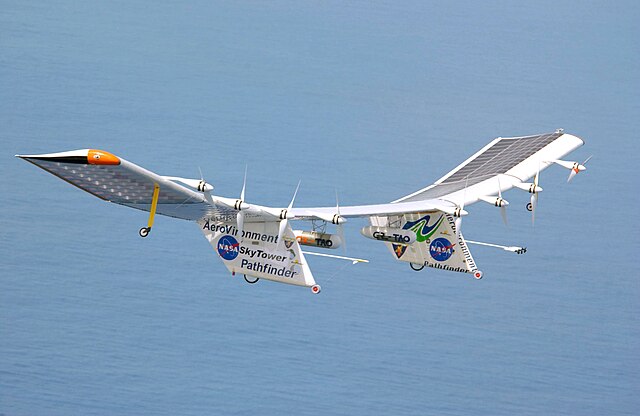Loading AI tools
Flying sun-powered vehicles From Wikipedia, the free encyclopedia
Solar-powered aircraft are electric aircraft that can be an airplane, blimp, or airship and use either a battery or hydrogen to store the energy produced by the solar cells and use that energy at night when the sun isn't shining.

Solar-powered aircraft do not require fuel, so they don't require oxygen, and they are able to operate at altitudes over 20 kilometres (12 mi) to 100 kilometres (62 mi) for months at a time.[1][2]
Conventional passenger or cargo aircraft usages aren't practical yet with modern technology, but high-altitude platform stations and long-endurance missions over a fixed location with unmanned aircraft or airships are feasible. Thus solar-powered aircraft could be used in telecommunications, video/imagery, flight control by transporting airport surveillance radars, in precipitation detection by transporting weather radars, geopositioning Global Positioning Systems (GPS),[3] and other pseudo satellite[4] applications that transpond the data with ground stations.
This list is non-exhaustive.

Solar Airship One is being developed by Euro Airship and is planning to launch a would tour in 2026 and fly by 25 countries in 20 days as it travels around the world non-stop.
It will be autonomous and use electrolysis to store hydrogen to keep moving at night when the sun isn't shining.[12]
Seamless Wikipedia browsing. On steroids.
Every time you click a link to Wikipedia, Wiktionary or Wikiquote in your browser's search results, it will show the modern Wikiwand interface.
Wikiwand extension is a five stars, simple, with minimum permission required to keep your browsing private, safe and transparent.